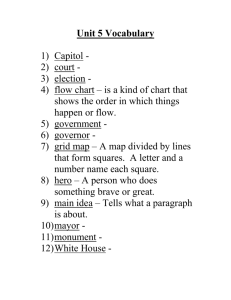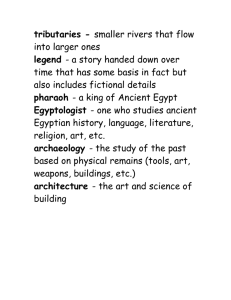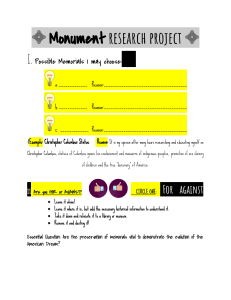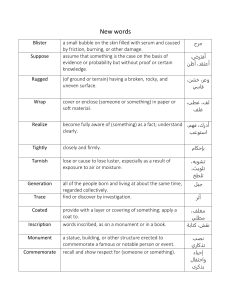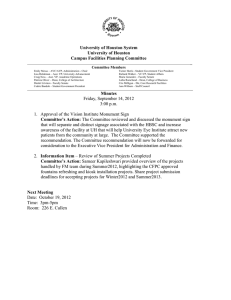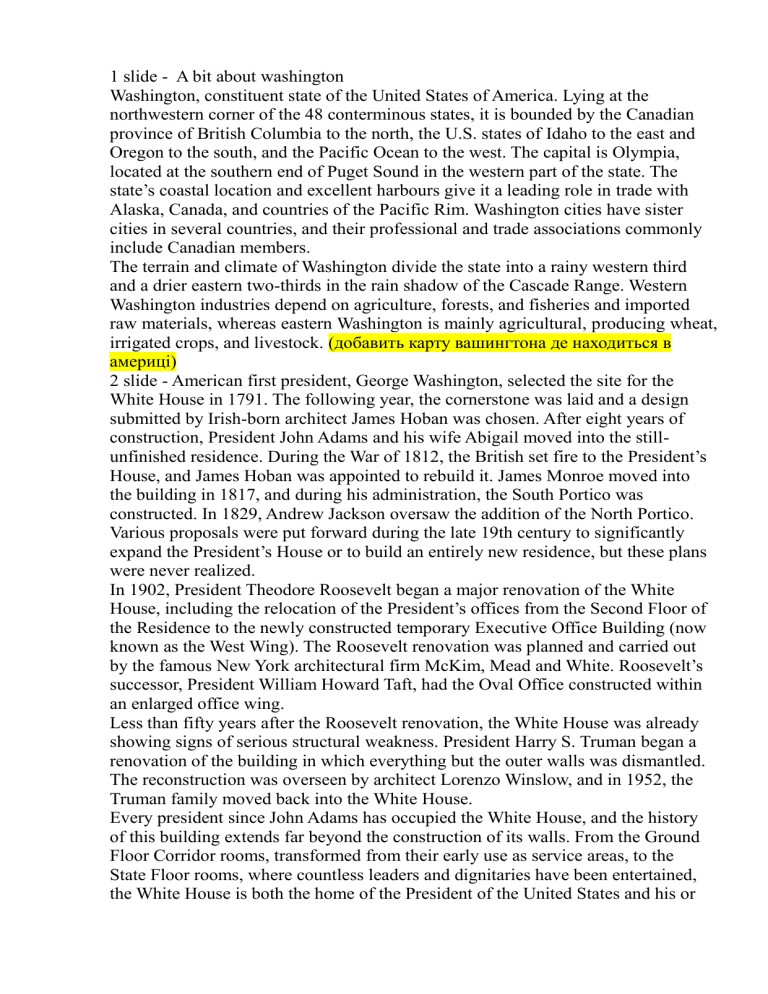
1 slide - A bit about washington Washington, constituent state of the United States of America. Lying at the northwestern corner of the 48 conterminous states, it is bounded by the Canadian province of British Columbia to the north, the U.S. states of Idaho to the east and Oregon to the south, and the Pacific Ocean to the west. The capital is Olympia, located at the southern end of Puget Sound in the western part of the state. The state’s coastal location and excellent harbours give it a leading role in trade with Alaska, Canada, and countries of the Pacific Rim. Washington cities have sister cities in several countries, and their professional and trade associations commonly include Canadian members. The terrain and climate of Washington divide the state into a rainy western third and a drier eastern two-thirds in the rain shadow of the Cascade Range. Western Washington industries depend on agriculture, forests, and fisheries and imported raw materials, whereas eastern Washington is mainly agricultural, producing wheat, irrigated crops, and livestock. (добавить карту вашингтона де находиться в америці) 2 slide - American first president, George Washington, selected the site for the White House in 1791. The following year, the cornerstone was laid and a design submitted by Irish-born architect James Hoban was chosen. After eight years of construction, President John Adams and his wife Abigail moved into the stillunfinished residence. During the War of 1812, the British set fire to the President’s House, and James Hoban was appointed to rebuild it. James Monroe moved into the building in 1817, and during his administration, the South Portico was constructed. In 1829, Andrew Jackson oversaw the addition of the North Portico. Various proposals were put forward during the late 19th century to significantly expand the President’s House or to build an entirely new residence, but these plans were never realized. In 1902, President Theodore Roosevelt began a major renovation of the White House, including the relocation of the President’s offices from the Second Floor of the Residence to the newly constructed temporary Executive Office Building (now known as the West Wing). The Roosevelt renovation was planned and carried out by the famous New York architectural firm McKim, Mead and White. Roosevelt’s successor, President William Howard Taft, had the Oval Office constructed within an enlarged office wing. Less than fifty years after the Roosevelt renovation, the White House was already showing signs of serious structural weakness. President Harry S. Truman began a renovation of the building in which everything but the outer walls was dismantled. The reconstruction was overseen by architect Lorenzo Winslow, and in 1952, the Truman family moved back into the White House. Every president since John Adams has occupied the White House, and the history of this building extends far beyond the construction of its walls. From the Ground Floor Corridor rooms, transformed from their early use as service areas, to the State Floor rooms, where countless leaders and dignitaries have been entertained, the White House is both the home of the President of the United States and his or her family, and a living museum of American history. The White House remains a place where history continues to unfold. There are 132 rooms, 35 bathrooms, and 6 levels in the Residence. There are also 412 doors, 147 windows, 28 fireplaces, 8 staircases, and 3 elevators. The White House kitchen is able to serve dinner to as many as 140 guests and hors d’oeuvres to more than 1,000. The White House requires 570 gallons of paint to cover its outside surface. At various times in history, the White House has been known as the “President’s Palace,” the “President’s House,” and the “Executive Mansion.” President Theodore Roosevelt officially gave the White House its current name in 1901. 3 slide - 10 fascinating facts on the White House’s anniversary Here’s a look at 10 factoids you can use to impress your friends and liven up any conversation about the White House. 1. Another city built its own version of the White House. Philadelphia wasn’t happy that the new city of Washington was getting the president’s executive mansion. During the 1790s, the city built its own presidential palace as a way to tempt George Washington and others to stay in Philadelphia, which was the acting capital. Washington refused to use the “palace” and stayed elsewhere in Philadelphia. That location is two blocks south of the National Constitution Center. 2. George Washington never lived in the White House. Don’t look for Washington’s ghost on your next White House tour. The mansion was in the city named for Washington, and he had a role in the executive residence’s creation. But George passed away in late 1799, about one year before John Adams became the first president to live in the building. 3. Very little of the original White House remains. The British burned the original White House in 1814 after U.S. forces set fire to Canada’s parliament. The famous Gilbert Stuart painting of George Washington was saved by a fleeing Dolley Madison (with some help), and some exterior stone walls survived the fire. 4. There was a second big fire at the White House. A blaze on Christmas Eve in 1929 gutted parts of the West Wing and Oval Office during Herbert Hoover’s Administration. Hoover left a Christmas party to personally direct the firefighting efforts, helped by Ulysses S. Grant III, a city official. Hoover also briefly entered the Oval Office during the fire, but he was whisked away by the Secret Service. The blaze was started by a blocked fireplace flue. 5. The suffragists picketed at the White House for two years. The heated fight over the right of women to vote reached a fever pitch in 1917, as suffragists (or suffragettes) became the first picketers at the White House gates, in an attempt to get President Woodrow Wilson’s attention. Led by Alice Paul, the picketers stayed in front of the White House for two years, with more than 200 arrests. The pressure helped in the successful effort to pass the 19th Amendment. 6. Teddy Roosevelt created the West Wing. The West Wing was expanded under William Howard Taft and Franklin D. Roosevelt, but it was Teddy who got the facility built. Thomas Jefferson had started the ball rolling with the idea 100 years earlier, but things take a long time to build in Washington. Teddy had some conservatories leveled and the “temporary” office building established, to be connected to the main White House using a colonnaded gallery. President Taft added the Oval Office to the West Wing. 7. The White House was nearly condemned in 1948. President Harry S. Truman was forced out of the White House and lived in the Blair House after officials decided the aging White House was close to collapse. Apparently, the repair budget under the FDR Administration was ignored, even as more White House staffers were added to payrolls. In 1948, engineers discovered it was structurally unsound and close to falling down. Truman then spearheaded an extensive renovation and restoration project, which was completed in 1952. 8. There was a 1950 attack on the president’s house. While Truman was staying at the Blair House, two Puerto Rican nationalists attempted to storm the Blair House and kill Truman while he was napping inside the residence. After a 38-second gun battle, one assailant was dead, and a White House police officer was mortally wounded. They were apparently emboldened by the idea that the Blair House was less secure than the White House. The officer who died in the attack fatally shot the assailant as he stood 30 feet from the president’s bedroom window. Truman had moved to the window just before the assailant was killed. 9. You can buy your own White House for just $5 million. That may sound like a lot of money, but it’s a steal when the real White House is worth about $110 million (or as much as $286 million by another estimate). The replica White House is in McLean, Virginia, and it has 14,000 square feet of space, compared with 55,000 for the real White House. It does have a full-sized Oval Office and replica Lincoln bedroom. The original owners used plans from the real White House to build the facility from scratch. 10. The White House is missing its cornerstone. Any anniversary of the White House wouldn’t be complete without the story of its missing cornerstone. On that fateful day in October 1792, a group of freemasons met at a Georgetown tavern and paraded to the proposed site of the president’s mansion. In a ceremony, they placed an inscribed cornerstone to mark the start of the House’s construction. They then marched to an inn and made a toast to the event. And another, and another. In fact, they made 16 toasts! So no one really documented where the stone was. President Truman tried to find the stone during the renovation period, but no one has seen it since 1792. One theory is that is embedded between two stone walls near the Rose Garden 4 slide - How the White House Was Built Standing as one of the most iconic buildings in the world, as well as a monument signifying our nation's democracy, the White House is an important part our national identity. This historic building is easily one of the most recognizable buildings in the world, but how much do you really know about its construction? Let's take a closer look at how the White House was built for a deeper understanding every proud American needs! A Competition When looking at how the White House was built, an interesting fact is that it was the result of a competition. In 1791, artist and engineer Pierre Charles L'Enfant worked with George Washington to create a city plan for Washington, D.C. with 82 acres designated as "President's Park" for a presidential residence. While officials for New York and Philadelphia both campaigned to persuade George Washington to make their cities the official capital of the nation, Washington chose a place centrally located between Virginia and Maryland on the Potomac River. While George Washington chose the spot for the White House, the actual design of the building was a competition with many architects submitting proposals. The design was selected in 1792 from James Hoban, an Irish immigrant to the U.S. who had molded his design loosely on the Dublin residence of the Duke of Leinster. The original plan for a "President's Palace" house was four times the size of Hoban's design, but was scaled back during the final design approval. While it was scaled back considerably, the White House was still the largest sized house in the nation until after the Civil War. Fun Facts about the White House Building It has 132 rooms including 35 bathrooms! While there are obvious rooms you expect in such an institution such as the Oval Office, the Situation Room, the Cabinet Room, and the Press Briefing Room, and other official areas of business, there are also quite a few residential spaces for the First Family during their years living in this not so humble abode. For example, there are multiple kitchens all serving different purposes, workout rooms, and 16 family guest rooms. A few other fun facts of this nature include such figures as there are 412 doors, 147 windows, 28 fireplaces, 8 staircases, and 3 elevators all housed in this special building. There are some interesting add on rooms you might not know about. Every president makes changes to the White House during their time serving in office and it has created a few fun, unexpected rooms. For instance, the White House has a bowling alley, family movie theater, music room, florist, and chocolate shop! The total floor space is approximately 55,000 square feet when you combine all six floors of the White House. A house this big takes a lot of paint to cover the exterior. A fun fact is that it takes 570 gallons of white paint to cover the outside of the White House in one coat of paint! 5 slide - The Construction Once the competition was over and the plans approved, construction could begin on the project. The White House was officially under construction in 1792 and would take 8 years for a president to move in after completing the construction which cost a whopping sum in that era of $232,372. To put that figure into perspective, it would amount to $100 million today. The White House was built by slave labor as well as immigrant labor from Ireland, Scotland, and other various parts of Europe. The first president to move in was John Adams in 1800. 6 slide - Changes in Original Design When looking at how the White House was built, most people are shocked to find out the current design looks nothing like the original from James Hoban. For starters, the original did not have the East and West Wings which were added on in later years. The building also wasn't always called the White House. It wasn't until 1901 that name took hold thanks to Theodore Roosevelt making it the official name of the residence. 7 slide - The Fire of 1814 and Truman The White House was set on fire on August 24, 1814 as a retaliation from the British during the War of 1812. The president at the time, James Madison, was not in the residence at the time, but the First Lady Dolly Madison was tasked with saving important state documents before fleeing the building. She also famously saved a full-sized portrait of George Washington which still hangs in the White House today. The building was rebuilt by James Hoban, the original designer, after the fire. While the building was rebuilt, there were later reports that the building was on the verge of collapse in many ways as time progressed. Theodore Roosevelt made some major renovations in his time in office. He was also the first president to move the official presidential office to what is now called the Oval Office on the ground level instead of a smaller office on the second floor. From 1948 to 1952, the White House underwent changes even more major than the ones caused by the fire of 1814 under the overseeing eye of President Harry S. Truman. These changes made the building safer and more comfortable for future generations of workers and presidential families. 8 slide – видео про washington white house 9 slide - "First in War, First in Peace, and First in the hearts of his countrymen." George Washington's military and political leadership were indispensable to the founding of the United States. As commander of the Continental Army, he rallied Americans from thirteen divergent states and outlasted Britain's superior military force. As the first president, Washington's superb leadership set the standard for each president that has succeeded him. The Washington Monument towers above the city that bears his name, serving as an awe-inspiring reminder of George Washington's greatness. The monument, like the man, stands in no one's shadow. The Washington Monument, designed by Robert Mills and eventually completed by Thomas Casey and the U.S. Army Corps of Engineers, honors and memorializes George Washington at the center of the nation's capital. The structure was completed in two phases of construction, one private (1848-1854) and one public (1876-1884). Built in the shape of an Egyptian obelisk, evoking the timelessness of ancient civilizations, the Washington Monument embodies the awe, respect, and gratitude the nation felt for its most essential Founding Father. When completed, the Washington Monument was the tallest building in the world at 555 feet, 5-1/8 inches. Aerial photograph of the Washington Monument shows the surrounding grounds, the Tidal Basin, and the Potomac River. The Washington Monument was the tallest building in the world upon its completion in 1884. 10 slide - Honoring the Father of This Country . The geometric layout of Washington, D.C.'s streets and green spaces, originally designed by Pierre L'Enfant, reserved a prominent space for a monument to George Washington at the intersection of lines radiating south from the White House and west of the Capitol. In 1833, the Washington National Monument Society, a private organization, formed to fund and build a monument to the first president that would be "unparalleled in the world." The Society solicited for donations and designs for a decade, settling on a design by Robert Mills in 1845. Mills' design called for a 600-foot Egyptian-style obelisk ringed by thirty 100-foot columns. The design was audacious, ambitious, and expensive, creating numerous complications during its construction. Despite difficulties raising funds, construction began on the Washington Monument in 1848. The cornerstone was laid on July 4 with upwards of 20,000 people in attendance including President James K. Polk; former First Lady Dolley Madison; Eliza Hamilton, widow of Alexander Hamilton, Washington's Treasury Secretary; George Washington Parke Custis; and future presidents Buchanan, Lincoln, and Johnson. Builders commenced work on the blue gneiss foundation, an 80-foot square step pyramid. With the substructure completed, the builders then proceeded to the above-ground marble structure, 55 feet, 1.5 inches square at the base, using a system of pulleys, block and tackle systems, and a mounted derrick to hoist and place the stones, inching the structure skyward. By 1854, the monument had reached a height of 156 feet above ground, but a turn of events stalled construction. 11 slide – CONTINUATION OF THE LAST SLIDE In 1853, a new group aligned with the controversial Know-Nothing Party gained control of the Washington National Monument Society in the Society's periodic board election. Having always struggled to gather funding, the Society's change in administration alienated donors and drove the Society to bankruptcy by 1854. Without funds, work on the monument slowed to a halt. Architect Robert Mills died in 1855. For more than two decades, the monument stood only partly finished, doing more to embarrass the nation than to honor its most important Founding Father. Congressional attempts to support the Washington National Monument Society failed as attentions turned toward the sectional crisis, then civil war. Only as the nation was rebuilding did attention once again turn toward honoring the man who had once united the states in a common purpose 12 slide – To Great Heights By a joint resolution passed on July 5, 1876, Congress assumed the duty of funding and building the Washington Monument. The U.S. Army Corps of Engineers, led by Lt. Col. Thomas Lincoln Casey, was responsible for directing and completing the work. Casey's first task was to strengthen the foundation of the monument, which he determined was inadequate for the structure as it was designed. For four years, the builders carefully beefed up the support at the base of the foundation to support the massive weight of the superstructure to come. To continue building upward, the masons needed stone. The trouble was that the quarry near Baltimore used for the initial construction was no longer available after so many years. Seeking a suitable match, the builders turned to a quarry in Massachusetts. However, problems quickly emerged with the quality and color of the stone, and the irregularity of deliveries. After adding several courses of this stone from Massachusetts, still recognizable by the naked eye today as a brownstreaked beltline one-third of the way up the monument, the builders turned to a third quarry near Baltimore that proved more favorable, and used that stone for the upper two-thirds of the structure. The stone never matched exactly, and the three slightly different colors from the three quarries are distinguishable today. 13 slide – Rather than ascend to 600 feet as Mills had intended in the original plan, Casey was persuaded to make the height of the structure ten times the width of the base, meaning the optimal height for the Washington Monument was 555 feet. Plans for ornate adornments on the obelisk and the ring of columns were scrapped in favor of the clean, stark look of a simple obelisk shape. Aesthetic reasons aside, the design choice reduced the cost and allowed for faster construction. Casey reduced the thickness of the walls from thirteen feet to nine feet between the 150 and 160 foot levels, a transition visible on a visit to the Washington Monument's interior. Using a steam-powered elevator that could lift six tons of stone up to a movable 20-foot-tall iron frame replete with a boom and block and tackle systems for setting the stones, the masons inched their way up the monument, building twenty feet of stone and mortar, then moving the iron framework up twenty feet, repeating as they went upward. 14 slide – 470 feet above the ground, the builders began angling buttresses inward to support the 300-ton marble pyramidion at the top of the monument. Supported by the buttresses, the angled walls of the pyramidion, anchored by mortice and tenon joints, climbed inward beginning at 500 feet above ground. On a breezy December 6, 1884, Lt. Col. Casey supervised as the 3,300-pound capstone was brought out through one of the windows, hoisted to the scaffolding at the dizzying tip of the monument, and set in place. Casey then placed the 8.9-inch aluminum tip atop the capstone to the cheers of the crowd below. The Washington Monument was complete, and it had surpassed the Cologne Cathedral to be the tallest building in the world at 555 feet, 5.125 inches. Inscribed on the aluminum cap, notable names and dates in the monument's construction are recalled, and on the east face, facing the rising sun, the Latin words "Laus Deo," which translate to, "Praise be to God." 15 slide – The Washington Monument was dedicated on a chilly February 21, 1885, one day before George Washington's birthday (which fell on a Sunday that year). After the completion of the iron staircase in the monument's interior, the Washington Monument was first accessible to the public in 1886, closed much of 1887 until it could be better protected from vandals, and reopened in 1888 with a public elevator. Visitors making the ascent could view commemorative stones inset in the walls from various individuals, civic groups, cities, states, and countries from around the world, the tokens of appreciation of Washington's admirers and, in many cases, the donors that contributed to the construction of the Monument in its privately-financed phase. Today there are 193 of these commemorative stones. Upkeep The original steam-driven elevator, with a trip time of 10-12 minutes to the top of the monument, was replaced with an electric elevator in 1901. The National Park Service was given jurisdiction over the Washington Monument in 1933, and the first restoration of the structure began as a Depression Era public works project in 1934. Additional restoration work occurred in 1964, from 1998-2001, in 20112014 (to repair damage following an earthquake) and from 2016-2019 for modernization of the elevator. 16 slide – відео про вашингтон монумент 17 slide – thank you for your attention! +quiz

